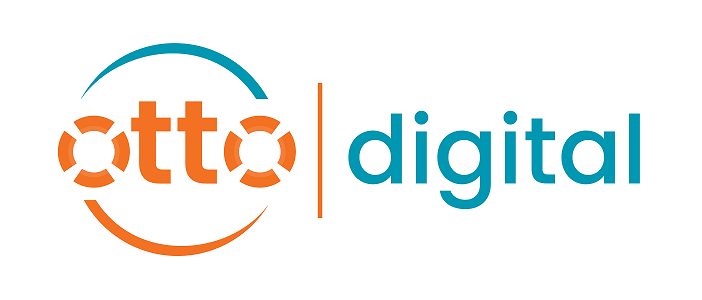CRM Implementation Challenges and Solutions

Customer Relationship Management (CRM) systems are now a must-have for Aussie businesses wanting to streamline operations, build stronger customer connections, and boost sales. But rolling out a CRM isn’t always smooth sailing. Many businesses across Australia hit roadblocks like messy data migration, poor user uptake, and integration headaches. Knowing these common challenges and how to tackle them is the key to a successful CRM journey.
Top 7 CRM Implementation Challenges
Challenge 1: Poor Data Quality and Migration Issues
Migrating existing data is often one of the trickiest parts. Old, incomplete, or inconsistent info can cause errors, making the CRM less reliable and trusted by users.
Solution:
Do a thorough data audit before migration.
Clean and standardise data to keep it consistent.
Use automated migration tools and run test migrations to catch problems early.
Challenge 2: Low User Adoption Rates
Even the best CRM is useless if your team won’t use it. Resistance to change, complicated interfaces, or lack of awareness often results in poor adoption and wasted investment.
Solution:
Get your team involved early in the selection and rollout.
Provide tailored, role-based training for different user groups.
Clearly communicate the benefits and keep offering support during the transition.
Challenge 3: Lack of Clear Business Goals
Without clear goals, CRM projects can drift off track, wasting time and money on features that don’t add value.
Solution:
Set specific, measurable goals upfront.
Align CRM functions with your sales, marketing, and customer service strategies.
Use these goals to guide system customisation and priorities.
Challenge 4: Inadequate Training and Support
Poor or insufficient training leaves users confused, frustrated, and likely to abandon the system.
Solution:
Develop a structured training plan with ongoing sessions.
Use a mix of formats workshops, webinars, and written guides.
Appoint CRM champions within teams to provide peer support.
Challenge 5: Integration with Existing Systems
Most Aussie businesses run several software tools. A CRM that doesn’t play well with your ERP, marketing, or support tools creates data silos and inefficiencies.
Solution:
Check integration capabilities before selecting a CRM.
Use APIs or middleware platforms to connect your systems.
Prioritise integrations that automate workflows and data sharing.
Challenge 6: Budget Overruns and Scope Creep
CRM projects can quickly blow budgets if new requirements pop up or unexpected issues arise.
Solution:
Set realistic budgets with a buffer for surprises.
Use agile project management to control scope and deliver in stages.
Regularly review progress and tweak plans as needed.
Challenge 7: Security and Compliance Risks
With strict Australian data privacy laws like the Australian Privacy Principles (APPs), CRM security is critical. Poor controls risk data breaches and hefty fines.
Solution:
Implement role-based access controls and data encryption.
Ensure your CRM provider complies with Aussie data protection standards.
Conduct regular security audits and staff training on handling data responsibly.
Best Practices to Ensure CRM Success
Involve Key Stakeholders Early
Bring sales, marketing, IT, and customer service on board early to tailor the CRM to real workflows and increase buy-in.Run a Pilot Program
Test the CRM with a small group to spot issues, gather feedback, and refine before the full rollout.Choose a Vendor Experienced in Australia
Local vendors understand our market and regulations, and provide better on-the-ground support.Regularly Review and Optimise
Track adoption, data quality, and ROI to keep improving your CRM over time.
Real-World Examples from Aussie Businesses
Retail Chain: Overcame data migration challenges with a phased rollout and pilot testing, leading to better customer insights and targeted marketing.
Financial Services Firm: Achieved 80% user adoption with comprehensive role-based training and ongoing support.
Manufacturing Company: Avoided scope creep by setting clear goals aligned with sales KPIs and using agile delivery methods.
Conclusion
Implementing a CRM is a big step that can transform your business if you get it right. By recognising challenges like data migration, user adoption, and system integration early, Australian businesses can plan smart solutions. Focus on clear objectives, thorough training, stakeholder engagement, and picking the right local vendor to ensure a smooth rollout. With these strategies, your business can fully tap into CRM’s power to strengthen customer relationships, boost efficiency, and drive growth.
Ready to nail your CRM implementation? Start planning with the right approach and expert help today.
Frequently Asked Questions
How long does a typical CRM implementation take in Australia?
It varies based on business size and complexity but generally ranges from 3 to 9 months. Phased rollouts and pilots help speed up adoption.
What’s the biggest CRM challenge Aussie businesses face?
Data quality and user adoption are often the top hurdles. Without clean data and engaged users, CRM projects struggle.
Can I integrate my CRM with other Australian business tools?
Absolutely. Most modern CRMs support integration with common ERP, marketing automation, and support platforms used in Australia.
How can I encourage my team to use the new CRM?
Involve them early, offer tailored training, clearly communicate benefits, and provide ongoing support and CRM champions.
Are Australian data privacy laws a big concern for CRM use?
Yes. It’s crucial your CRM complies with the Australian Privacy Principles (APPs) to protect customer data and avoid penalties.


